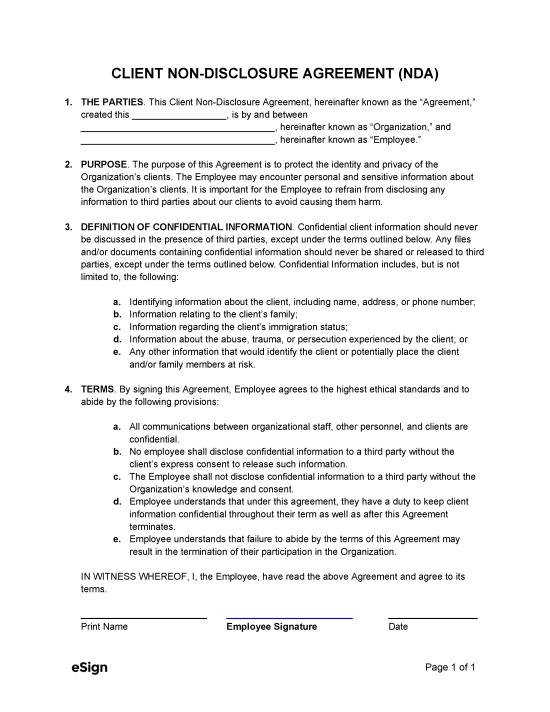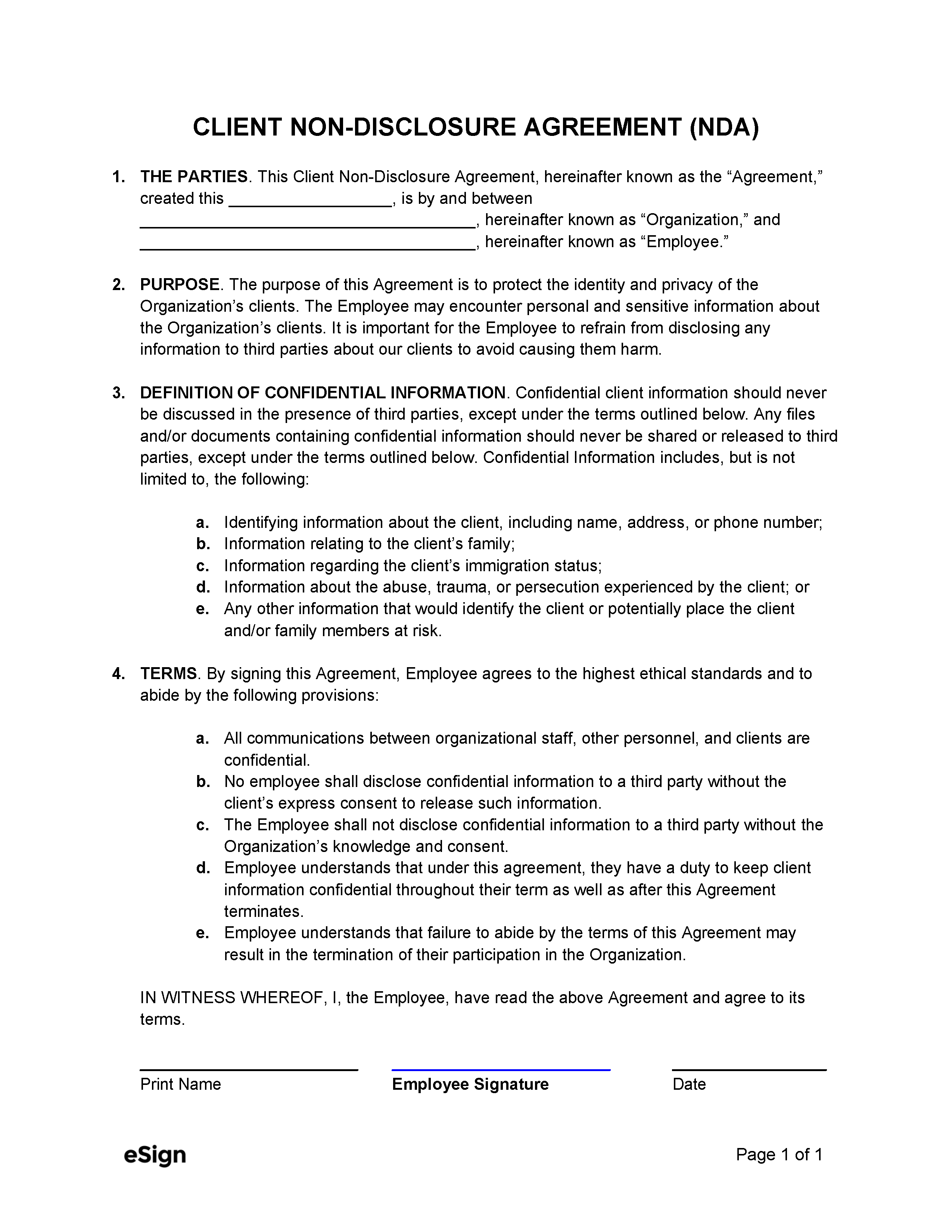Client Confidentiality
Respecting client confidentiality is extremely important for professionals whose clients reveal sensitive and private information.
Examples include:
- Personal attorneys
- Psychologists
- Account managers
- Immigration lawyers
- Therapists
Sample
Download: Adobe PDF | MS Word | OpenDocument
CLIENT NON-DISCLOSURE AGREEMENT (NDA)
1. THE PARTIES. This Client Non-Disclosure Agreement, hereinafter known as the “Agreement,” created this [MM/DD/YYYY], is by and between [ORGANIZATION NAME], hereinafter known as “Organization,” and [EMPLOYEE NAME], hereinafter known as “Employee.”
2. PURPOSE. The purpose of this Agreement is to protect the identity and privacy of the Organization’s clients. The Employee may encounter personal and sensitive information about the Organization’s clients. It is important for the Employee to refrain from disclosing any information to third parties about our clients to avoid causing them harm.
3. DEFINITION OF CONFIDENTIAL INFORMATION. Confidential client information should never be discussed in the presence of third parties, except under the terms outlined below. Any files and/or documents containing confidential information should never be shared or released to third parties, except under the terms outlined below. Confidential Information includes, but is not limited to, the following:
a. Identifying information about the client, including name, address, or phone number;
b. Information relating to the client’s family;
c. Information regarding the client’s immigration status;
d. Information about the abuse, trauma, and/or persecution experienced by the client; or
e. Any other information that would identify the client or potentially place the client and/or family members at risk.
4. TERMS. By signing this Agreement, Employee agrees to the highest ethical standards and to abide by the following provisions:
a. All communications between organizational staff, other personnel, and clients are confidential.
b. No employee shall disclose confidential information to a third party without the client’s express consent to release such information.
c. The Employee shall not disclose confidential information to a third party without the Organization’s knowledge and consent.
d. Employee understands that under this agreement, they have a duty to keep client information confidential throughout their term as well as after this Agreement terminates.
e. Employee understands that failure to abide by the terms of this Agreement may result in the termination of their participation in the Organization.
IN WITNESS WHEREOF, I, the Employee, have read the above Agreement and agree to its terms.
[EMPLOYEE NAME] Signature: ________________________ Date: [MM/DD/YYYY]

